Charger Xtar WP2 II
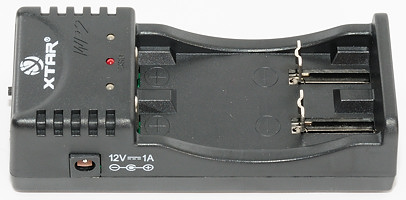
This charger is an update to the WP2 charger, the update includes a switch that can change between two different charge currents and a usb power output. The charger has two channels, i.e. it can do two cells independently of each other.


It comes in a cardboard box with a view to the charger and specifications on the back.
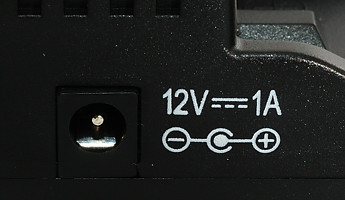
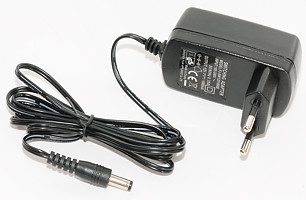

The charger is powered from a single 12 volt DC connector, this connector can be powered from either the supplied AC adapter or supplied car adapter. The AC adapter I got is a universal voltage adapter (100 - 240 VAC 50/60 Hz) with a plug for European use.
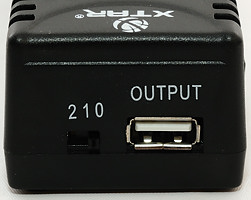
The switch select between usb power (position: 0), 0.5 ampere charge current (position: 1) or 1 ampere charge current (position: 2). This is not the best marking, something with USB, 0.5A and 1A would have been much better. I would have preferred that the switch was somewhere on top of the charger, to make it more visible. The usb connector is a usb power output, that can be used to power or charge small usb devices. it can supply up to about 500 mA.
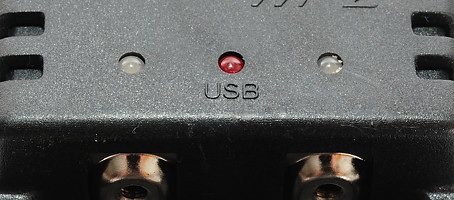
There is a charge led for each channel, this led will be red when the charger is charging and green at all other times when the charger is powered and charge selected. If the usb power function is selected, when power is connected, the led on the left channel (the channel used for usb power) will flash red.
The centre led is red and will be on when usb power is selected, no power is connected and a charged battery is in the left channel, i.e. when there is power on the usb connector.





The charger can handle 69.5 mm long batteries, including flat top cells. (See my 18650 LiIon comparison for length of different brands).
Measurements charger
Below 2 volt the charger charges with about 0.5 mA, this is enough to reset a protection pcb (Note: The led is green).
Between 2 volt and 3 volt the charger charges with about 80 mA.
Between 3 and 4.15 volt the charger is applying regular charge current (See curve below).
When the charge stops the current is between 60 and 75 mA in my test, when the charger is finishes the current goes down below 100uA (This is a insignificant current).
The charger will restart charging when the cell drops to 4.0 volt or after a power loss.
When charger is disconnected from power, but with a battery in, it will draw about 550 uA from the battery.
Two batteries will not change the charge current.
Because each channel is independent, the different voltages vary between the channels with a small amount.
.png)
The charge curve shows a good approximation to a CC/CV charger, but the charger stops to early, the voltage has not reached 4.2 volt. This means that the battery is not fully charged, but will have a longer lifetime.
.png)
Same battery on the other channel, there is not much different in terminating current and voltage compared to the first channel.
.png)
My old 16340 IMR cell.
.png)
The first curves was done with old cells, but this one is a new cell with low resistance. The voltage rises slower and the charger uses full charge current for some time, before switching to constant voltage (CV) charging.
.png)
In the above curve I am charging a cell in both slots, there is very little difference in performance between this and the above with a single cell. I.e. the charger can run both channels at full charge current simultaneous.
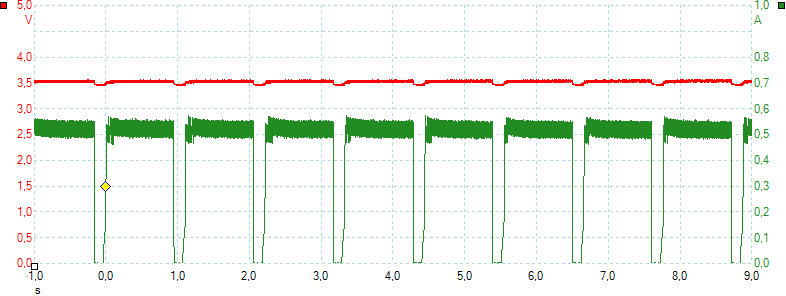
A closer look on all the noise in the current shows that the charger stops charging each time it want to measure voltage. This has the advantage that all connection resistance can be ignored and noise from the charger is eliminated.
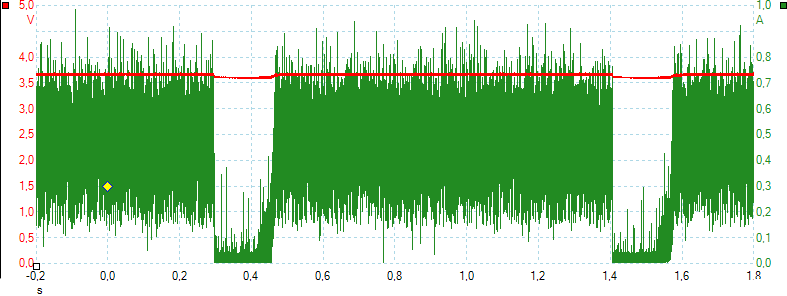
The first curve did not show much noise in the charge current, but that was because I used a filter. Without a filter it can be seen that it contains a lot of noise.
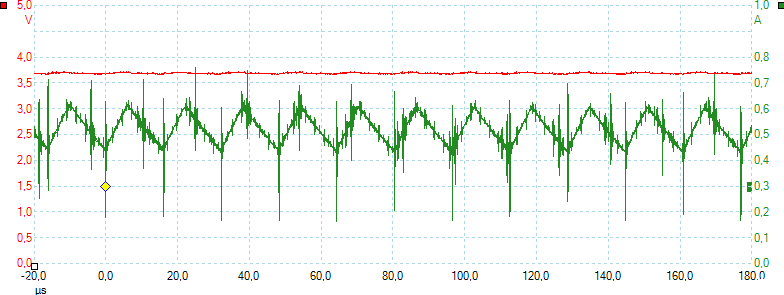
In this chart I have zoomed in on the noise.
Measurements on usb power
To use the usb power output a charged battery must be placed in the left slot, the switch must be in the usb power position (0) and the 12 volt input must not be supplied with power.
USB specification says the voltage must be between 4.75 and 5.25 volt.
All curves are made with Xtar 18650 2400mAh cells.
.png)
The first curve is with a 20 ohm load, this gives a load current of 250 mA, the usb output stays exactly at 5 volt, until the battery is empty. It keeps a good efficiency at about 80%.
When the battery is empty the charger does not turn fully off, but continues to drain the battery for some time, to keep the battery voltage at 2.8 volt. It does not drain the battery below 2.8 volt.
.png)
Reducing the resistor and increasing the current to 417 mA also shows a good 5 volt output for more than 2½ hours. With the higher current the efficiency goes down, especially when the battery is nearly empty.
.png)
With 455 mA current it can keep the voltage within usb specifications for two hours.
.png)
With 500 mA in current the voltage is only within specifications for one hour.
Conclusion
The charger is very close to a CC/CV charging profile. The charger does charge to a little below 4.2 volt, this might put slightly less energy in the battery, but will increase the lifetime of the battery a little. Because the charger does supply a small current at 0 volt, it can reset any kind of protection. The possibility to select two charge currents makes it much better for both 18650 and smaller cells, the 18650 can be charge faster and the smaller cells can be charged safer.
The usb power is a nice addition, but would have been even better if it always worked when 12 volt was connected to the charger.
All in all a good charger and a nice upgrade to the old WF2 charger.
Notes
Here is an explanation on how I did the above charge curves: How do I test a charger
The charger was supplied by XTAR for a review.













.png)
.png)
.png)
.png)
.png)



.png)
.png)
.png)
.png)